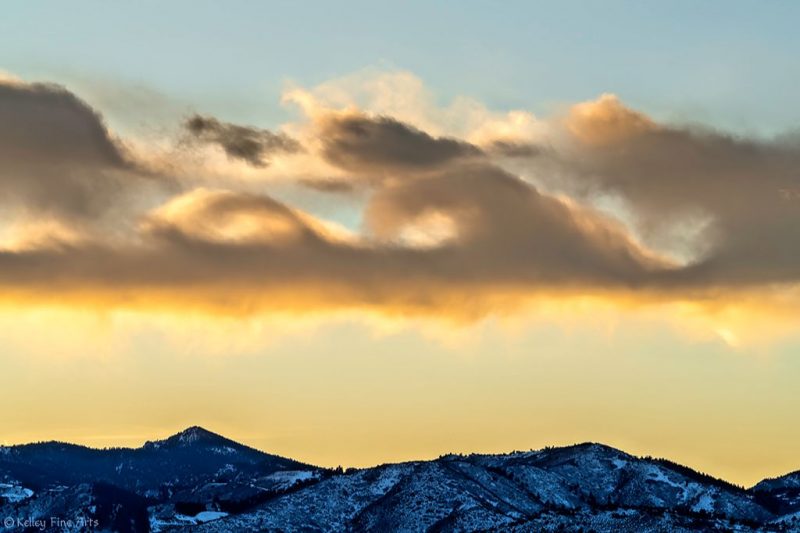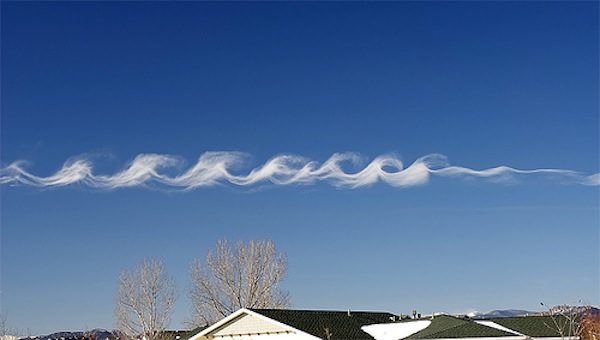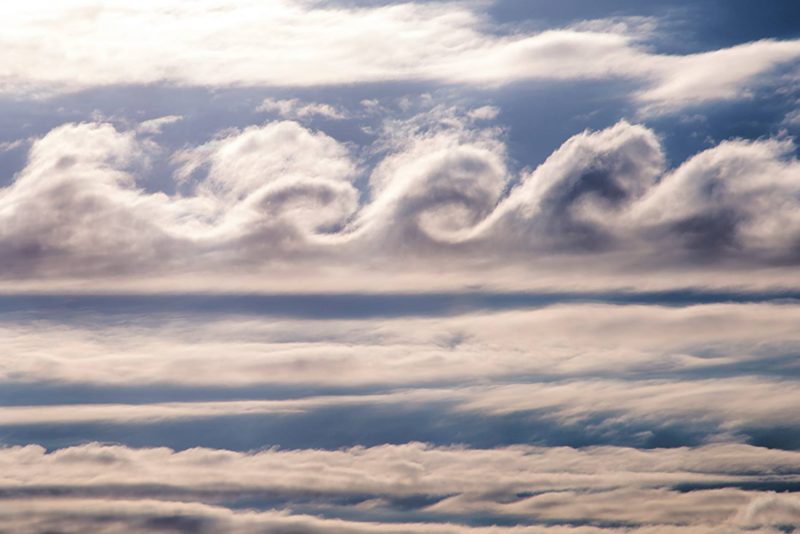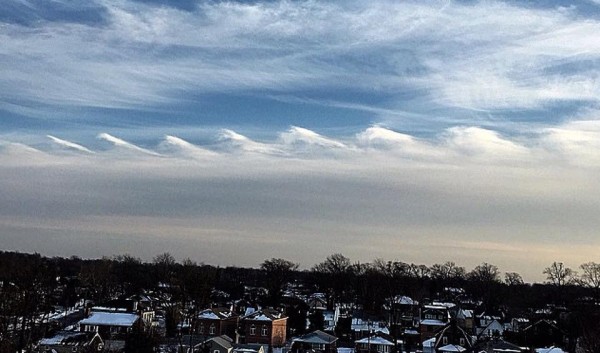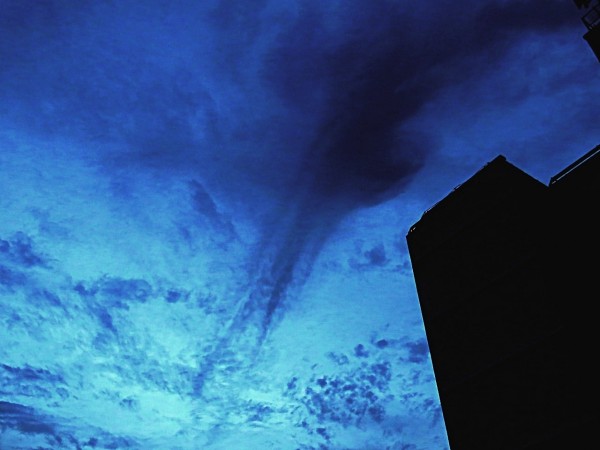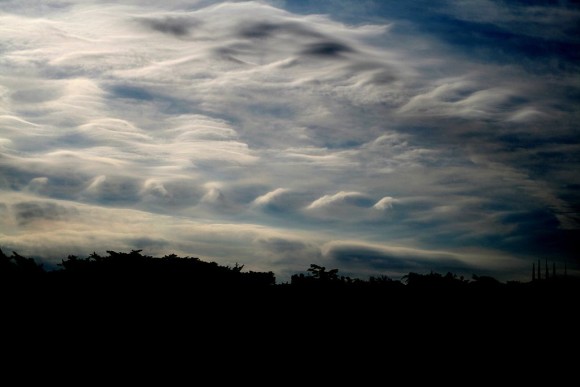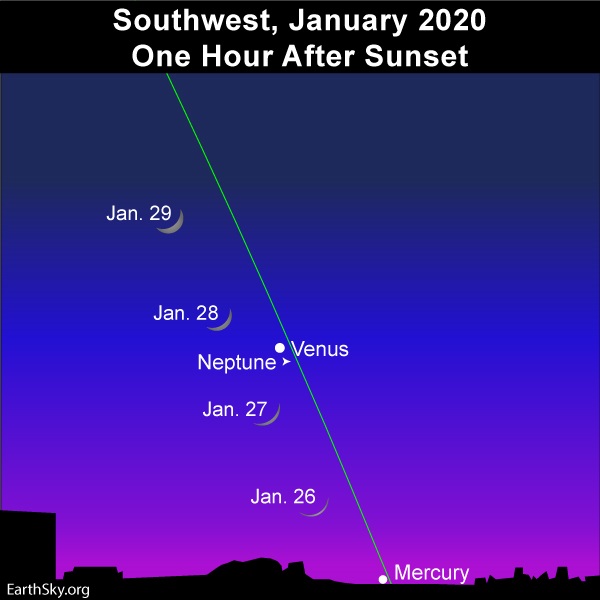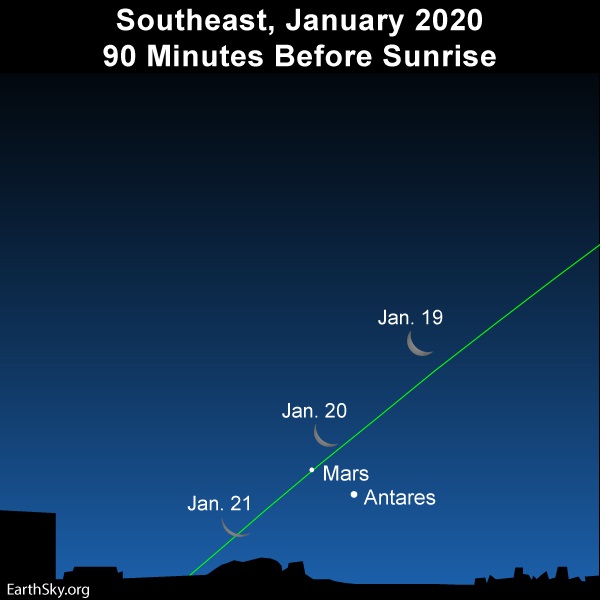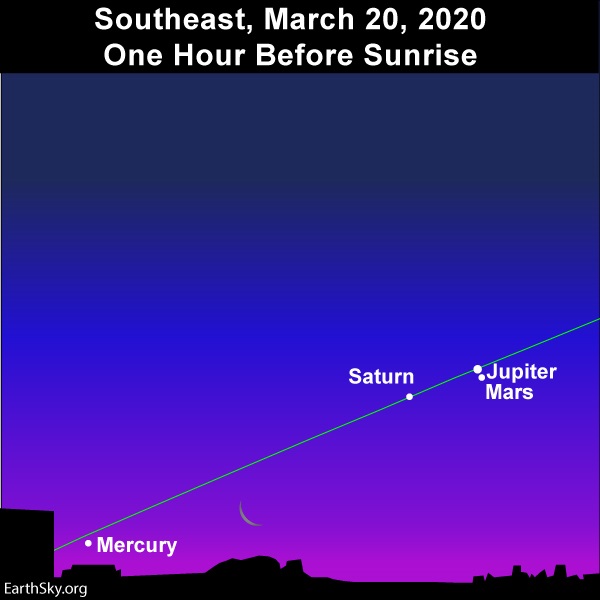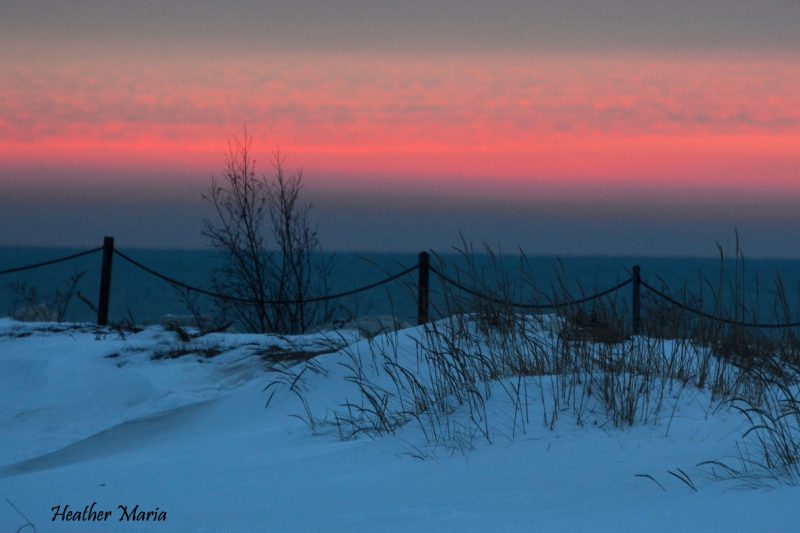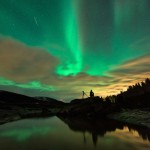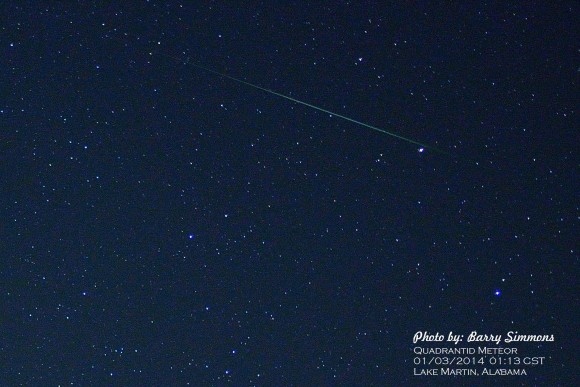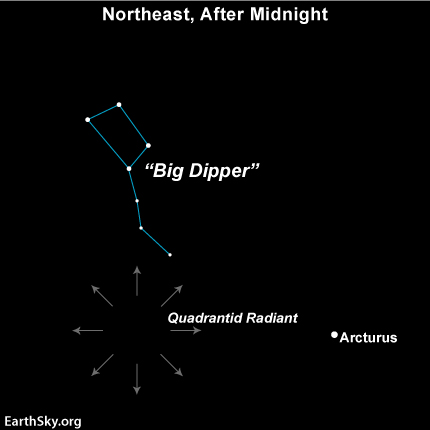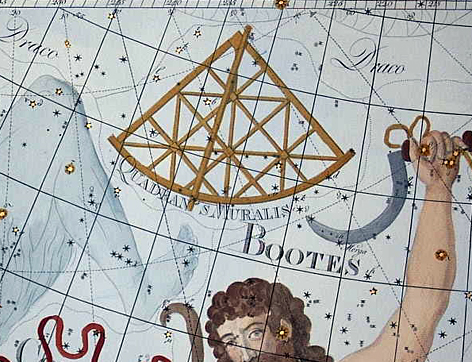
The annual Quadrantid meteor shower is nominally active for roughly two weeks, from about December 27 until about January 10 each year. However, peak activity lasts less than a day, and – to see the best display – you need to be on Earth’s night side during the Quadrantids’ short peak. The International Meteor Organization (IMO) predicts the 2020 peak will come on January 4 at 8 hours UTC. If that forecast holds, it places the peak around 3 a.m. Eastern Time in North America (2 a.m. Central Time, 1 a.m. Mountain Time and 12 midnight Pacific Time) on January 4. Translate UTC to your time.
The hope is always that the shower peaks at about the same time that the radiant is high up in your sky. That won’t be true for everyone across the globe, of course, but the prediction looks good for North America this year.
Keep in mind that meteor showers are fickle. Thus this prediction might – or might not – hold. So avid meteor watchers across the globe will be on the watch no matter what. As we’ve said before, meteor showers are like fishing. You wait, you watch … sometimes you catch something.
For all of us, some good news. In 2020, the waxing gibbous moon will set way before dawn’s first light, enabling you to watch this shower in a deliciously dark sky in the wee hours before dawn.
Another note about the Quadrantids. The shower is best seen from northerly latitudes because the radiant point for this shower (shown on the sky chart at top) is so far north on the sky’s dome.
Look at the sky chart above. The higher that you see the Big Dipper and the star Arcturus in your sky, the more likely that you’ll see some Quandrantid meteors. From mid-northern latitudes across the globe, the Big Dipper sits on the horizon at nightfall and climbs upward during the night. In the predawn hours, at mid-northern latitudes across the globe, the Big Dipper swings above Polaris the North Star. If the IMO prediction holds – and the peak comes around 8 UTC on January 4, 2020 – North American skywatchers have a decent chance of catching perhaps 15 to 25 meteors per hour. If we’re exceptionally lucky, we might see several times that number.
To find out when the moon sets in your sky, click on this Custom Sunrise Sunset Calendar and remember to check the Moonrise and Moonset box.
Will you see any meteors? Maybe!
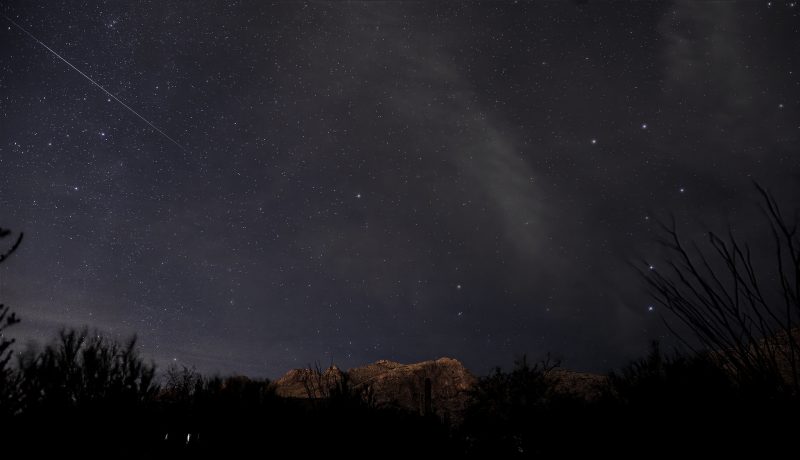
Eliot Herman in Tucson, Arizona caught this early Quadrantid in late December, 2016. The radiant point was below his horizon then, but you can see a piece of the Big Dipper asterism ascending on the right side of the photo. Thanks, Eliot!
You wouldn’t think people would be so determined to watch such an iffy shower. And yet the Quandrantids is one of the year’s most popular showers. Just remember, the Quadrantid shower has a narrow peak, lasting for only a few hours. If you miss the peak – which is easy to do – you won’t see many meteors.
But the pay-off can be good! The Quadrantids can match the meteor rates of the better-known August Perseid and December Geminid showers. The shower has been known to produce up to 50-100 or more meteors per hour in a dark sky.
Also know that this meteor shower favors the Northern Hemisphere because its radiant point – the point in the sky from which the meteors appear to radiate – is far to the north on the sky’s dome. So it’s not a globally watched shower, as many are.
If you’re thinking of watching the Quadrantids, do it. Meteor shower peaks are rarely a certainty. It’s nearly always a gamble that a shower will reward you with a good show.
The Quadrantid shower is named after the defunct 19th century constellation Quadrans Muralis. If you trace the paths of the Quandrantids backward, they appear to radiate from a point where this constellation once reigned in the sky. If you wish, you can locate the Quadrantid radiant in reference to the Big Dipper and the bright star Arcturus. Use the chart at the top of this post.
But you don’t need to find the radiant to enjoy the Quadrantids. You only need a dark, open sky for an hour or so before dawn.

View larger. | EarthSky Facebook friend Susan Jensen caught this beautiful Quadrantid in 2013.
Bottom line: If you’re at a northerly latitude, try the Quadrantid meteor shower from late night January 3 to dawn January 4, 2020. This shower can produce 50-100 meteors per hour, but its peak is short and sweet.
Want more? Try this post. Everything you need to know: Quadrantid meteor shower
Never miss another full moon! EarthSky moon calendar for 2020
EarthSky’s meteor shower guide for 2020
Big and Little Dippers: Noticeable in northern sky
from EarthSky https://ift.tt/2ubiJ4y

The annual Quadrantid meteor shower is nominally active for roughly two weeks, from about December 27 until about January 10 each year. However, peak activity lasts less than a day, and – to see the best display – you need to be on Earth’s night side during the Quadrantids’ short peak. The International Meteor Organization (IMO) predicts the 2020 peak will come on January 4 at 8 hours UTC. If that forecast holds, it places the peak around 3 a.m. Eastern Time in North America (2 a.m. Central Time, 1 a.m. Mountain Time and 12 midnight Pacific Time) on January 4. Translate UTC to your time.
The hope is always that the shower peaks at about the same time that the radiant is high up in your sky. That won’t be true for everyone across the globe, of course, but the prediction looks good for North America this year.
Keep in mind that meteor showers are fickle. Thus this prediction might – or might not – hold. So avid meteor watchers across the globe will be on the watch no matter what. As we’ve said before, meteor showers are like fishing. You wait, you watch … sometimes you catch something.
For all of us, some good news. In 2020, the waxing gibbous moon will set way before dawn’s first light, enabling you to watch this shower in a deliciously dark sky in the wee hours before dawn.
Another note about the Quadrantids. The shower is best seen from northerly latitudes because the radiant point for this shower (shown on the sky chart at top) is so far north on the sky’s dome.
Look at the sky chart above. The higher that you see the Big Dipper and the star Arcturus in your sky, the more likely that you’ll see some Quandrantid meteors. From mid-northern latitudes across the globe, the Big Dipper sits on the horizon at nightfall and climbs upward during the night. In the predawn hours, at mid-northern latitudes across the globe, the Big Dipper swings above Polaris the North Star. If the IMO prediction holds – and the peak comes around 8 UTC on January 4, 2020 – North American skywatchers have a decent chance of catching perhaps 15 to 25 meteors per hour. If we’re exceptionally lucky, we might see several times that number.
To find out when the moon sets in your sky, click on this Custom Sunrise Sunset Calendar and remember to check the Moonrise and Moonset box.
Will you see any meteors? Maybe!

Eliot Herman in Tucson, Arizona caught this early Quadrantid in late December, 2016. The radiant point was below his horizon then, but you can see a piece of the Big Dipper asterism ascending on the right side of the photo. Thanks, Eliot!
You wouldn’t think people would be so determined to watch such an iffy shower. And yet the Quandrantids is one of the year’s most popular showers. Just remember, the Quadrantid shower has a narrow peak, lasting for only a few hours. If you miss the peak – which is easy to do – you won’t see many meteors.
But the pay-off can be good! The Quadrantids can match the meteor rates of the better-known August Perseid and December Geminid showers. The shower has been known to produce up to 50-100 or more meteors per hour in a dark sky.
Also know that this meteor shower favors the Northern Hemisphere because its radiant point – the point in the sky from which the meteors appear to radiate – is far to the north on the sky’s dome. So it’s not a globally watched shower, as many are.
If you’re thinking of watching the Quadrantids, do it. Meteor shower peaks are rarely a certainty. It’s nearly always a gamble that a shower will reward you with a good show.
The Quadrantid shower is named after the defunct 19th century constellation Quadrans Muralis. If you trace the paths of the Quandrantids backward, they appear to radiate from a point where this constellation once reigned in the sky. If you wish, you can locate the Quadrantid radiant in reference to the Big Dipper and the bright star Arcturus. Use the chart at the top of this post.
But you don’t need to find the radiant to enjoy the Quadrantids. You only need a dark, open sky for an hour or so before dawn.

View larger. | EarthSky Facebook friend Susan Jensen caught this beautiful Quadrantid in 2013.
Bottom line: If you’re at a northerly latitude, try the Quadrantid meteor shower from late night January 3 to dawn January 4, 2020. This shower can produce 50-100 meteors per hour, but its peak is short and sweet.
Want more? Try this post. Everything you need to know: Quadrantid meteor shower
Never miss another full moon! EarthSky moon calendar for 2020
EarthSky’s meteor shower guide for 2020
Big and Little Dippers: Noticeable in northern sky
from EarthSky https://ift.tt/2ubiJ4y






